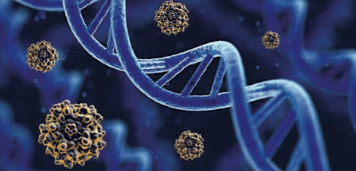
Image credit: Shutterstock
After years of research, the field of gene therapies is at a tipping point. Recent years have seen immense progress in this segment. After the landmark approval of Spark therapeutics’ Luxturna to treat genetic blindness in 2017, the regulator has approved four gene therapy products to date. The US FDA predicts 10 to 20 annual cell and gene therapy drug approvals by 2025.
"The primary recent drivers behind the interest and activity in gene therapy are related to the approvals in the last few years of highly visible gene therapy products, notably Spark/Roche and Avexis/Novartis as well as the large acquisitions of those companies. The development of improved technologies for gene editing and gene delivery have certainly contributed to advancements – but better, more transformative solutions are needed in gene therapy," said Mark Gergen, President and Chief Business Officer, Poseida Therapeutics, USA.
US-based Poseida Therapeutics is focused on using novel proprietary piggyBac gene insertion, Cas-CLOVER gene editing and nanoparticle delivery technologies to pursue creating non-viral single treatment cures for a variety of rare diseases. In 2019, the firm received US FDA orphan drug designation for its autologous CAR-T therapy, P-BCMA-101, for the treatment of multiple myeloma.
"Patients with high unmet needs and serious conditions have driven our focus and prioritisation of resources. We have developed a clinical and preclinical pipeline that spans the spectrum of genomic medicine. We have gene and cell therapy product candidates in the clinic today, and preclinical programs in emerging areas of genome engineering and off-the-shelf cell therapy. This field of medicine lends to a vision that one day we will have long-lasting genomic treatments or even cures to replace today’s symptomatic treatments," said Dr R Andrew Ramelmeier, Executive Vice President, Technical Operations, Sangamo Therapeutics, USA.
In Feb 2020, Sangamo partnered with Biogen to develop gene regulation therapies for Alzheimer’s, Parkinson’s, Neuromuscular, and other neurological disorders.
Complexities in manufacturing
While there is a significant momentum, there have also been multiple setbacks pertaining to efficacy, durability, and manufacturing of such therapies.
In 2020, the USFDA has rejected BioMarin Pharmaceuticals haemophilia A therapy Roctavian, Audentes Therapeutics’ gene therapy for a rare neuromuscular disease, and UniQure’s hemophilia B gene therapy.
Despite the wide range of methods and technologies available, major manufacturing bottlenecks still remain.
The most common technology used in vivo gene therapy today is Adeno Associated Virus (AAV), which, as a virus, is difficult and expensive to manufacture at scale and has other inherent limitations and there is limited global capability to manufacture AAV at commercial scale.
“While there has been a lot of excitement and investment in gene therapy in the last few years, I would not categorise it all as ‘progress’. There remain major challenges stemming from the use of older technologies like AAV that have resulted in numerous safety and efficacy challenges for the industry,” said Gergen.
AAV also has other limitations that inhibit commercialisation and scale of such therapies.
The large doses used in current gene therapies pose another challenge. Not only is this difficult and expensive to manufacture, administering large doses of AAV has been linked to adverse safety outcomes.
Trends shaping the gene therapy landscape
Most of the proclaimed innovation revolves around trying to develop improved or better AAV capsids to try to reduce safety concerns and increase efficacy.
“We see the true innovation coming in several forms that inform our approach to gene therapy. First, gene therapy ultimately needs to move away from viral delivery to a safer, better and more scalable solution – in our case, nanoparticle delivery of in vivo gene therapies. Second, true innovation in gene therapy will pursue possible single treatment cures, meaning permanent gene correction or addition by either using an integrating technology or gene editing. In contrast, AAV and nanoparticle RNA approaches are destined to be transient in nature,” said Gergen.
The solution to industrialisation and commercial scale of gene therapies is to move away from AAV into a better delivery technology approach such as nanoparticle delivery and, ideally, to an approach that can permanently correct the underlying genetic defect and deliver a cure.
“Nanoparticle technology overcomes the limitations of AAV in multiple respects: first, it is cheaper, faster and less complex to manufacture; second, it does not stimulate antibodies,” said Gergen.
The successes of mRNA-based COVID-19 vaccines reflect advances in mRNA research that could also expand the application of mRNA for gene therapies. mRNA holds various advantages over DNA based vectors such as rapid and transient expression, and adaptive convertibility without mutagenesis.
The other trend addresses manufacturing challenges. "Investing in manufacturing processes and analytics so that we establish highly productive processes and more potent AAV vectors is another trend shaping this sector,” said Dr R Andrew Ramelmeier.
The past decade has been the years of growth and establishment of a robust gene therapy market and the next decade will be all about the maturity and new innovation in the sector. The current covid-19 crisis will play a significant part in shaping this sector.
Latest developments in gene therapy
Ayesha Siddiqui
ayesha.siddiqui@mmactiv.com




